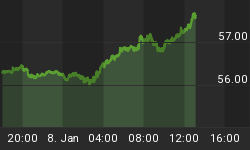The world’s next hopeful tourism hot spot has everything from historical riches, magnificent landscapes, megacities and mega-resorts to severely restricted freedom of expression, a penchant for arresting, detaining and deporting foreigners, and a rather poor track record when it comes to women’s rights.
Welcome to the Kingdom of Saudi Arabia, where the doors have just been thrown wide open to flocks of potential tourists with a new policy that allows visitors to obtain one-year, multiple-entry visas for 90-day visits.
And it’s not just about a religious pilgrimage to Mecca.
In return, the Saudis are promising international visitors the warm hospitality, rich heritage, vibrant culture, and diverse and breath-taking landscapes--from the mountains of Abha to the beaches of the Red Sea and the shifting sands of the Empty Quarter.
The timing may seem odd coming after the murder of Saudi journalist Jamal Khashoggi and the attacks on Saudi oil facilities, but the Saudi push for tourism was actually a long time coming.
And now, beginning on September 27th, foreigners from 49 countries are able to enter Saudi Arabia with e-visas and visas-on-arrival.
But will the great rebranding actually work? After all, now a tourist doesn’t just have “decency rules”, women’s rights, and human rights in general to worry about. Now, there are added security concerns.
But Saudi Vision 2030 plods along, nonetheless, spurred on by a Crown Prince desperate to repair a very damaged reputation. Related: Safe Haven Assets Shine As Recession Looms
Saudi Vision 2030 is a plan to reduce Saudi Arabia's dependence on oil, diversify its economy, and develop public service sectors such as health, education, infrastructure, recreation and tourism.
Among the specific goals of the Vision 2030 plan are:
- Unemployment rate to be reduced from 11.6 percent to 7 percent
- By 2030 SMEs is estimated to account for 35 percent of GDP from existing contribution of 20 percent and private sector contribution from 40 percent to 65 percent
- To become one of the top 15 largest economies in the world from current position 19th largest economy in the world
- Share of the non-oil exports GDP is to be increased from 16 percent to 50 percent and non-oil government revenues to be increased from SAR 163 billion to SAR 1 trillion
- Localisation of oil and gas sectors to be increased from 40 to 75 percent
- To increase foreign direct investment from 3,8% to the international level of the 5.7 percent of GDP and to increase the public investment fund's assets from SAR 600 billion to over 3 trillion.
An obvious obstacle in achieving the lofty goals of Vision 2030 is the intense criticism in 2018 following the October 2nd murder of Khashoggi inside the Saudi consulate in Istanbul by Saudi agents.
In the aftermath of the Khashoggi murder, Saudi Arabia became a far less attractive venue for international investors.
Most of the projects planned by Vision 2030 are to be financed by the Saudi sovereign wealth fund, the Public Investment Fund of Saudi Arabia (PIF). PIF annually organizes an investment forum, the Future Investment Initiative, in context of Saudi Vision 2030 in Riyadh. However, this year, may top companies’ CEOs backed out of the conference.
In terms of the vacationing in Saudi Arabia, even the sky will not be the limit. The sector is expected to be the new white oil for Saudi Arabia that could generate $25 billion in revenues this year alone, according to unverified claims by local media.
Potential tourist areas include the Hijaz and Sarawat Mountains, Red Sea diving and a number of ancient ruins. And eventually, though there are many sceptics who say it will never get off the ground, the futuristic wonderland city of Neom, which will cost $500 billion to fully build out, complete with flying cars and potentially more robots than humans.
The only hitch? Getting investors.
By Mirela Ajanovic for SafeHaven.com


















The number one nation behind the Worlds terror.
Man o Man.